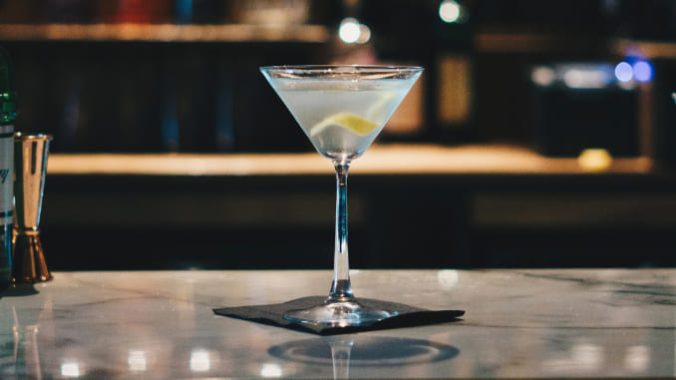Bond’s Signature Cocktail Celebrates Its 00-70th Anniversary
Photo by Ambitious Studio* - Rick Barrett/Unsplash
Written with a bespoke gold-plated Royal typewriter while on his honeymoon (that’s right) in Jamaica, Casino Royale was the first James Bond novel from author and world-renowned fuddy-duddy Ian Fleming. First published in 1953, this year marks 70 years since the world was first introduced to agent 007.
In that time, the globe-trotting, gun-toting assassin has brought an air of sophistication to action thrillers—both in print and on screen. Although Savile Row tailoring and pricey British sports cars are synonymous with the man meant to be a “blunt instrument” for His Majesty’s Secret Service, Bond’s character-defining character accoutrement is his libation of choice: the martini.
While Bond would go on to order his dry vodka martinis “shaken, not stirred,” inspiration struck when he first ordered a more specific variation. It includes both vodka and gin and nixes the vermouth, and he named the drink after his double-crossing love, Vesper. The novel popularized this particular expression of a martini (although it’s not what you’ll get if you order a Vesper martini today).
A few sentences before Bond conceives of the Vesper martini on the spot in Fleming’s novel, he introduces himself to his CIA counterpart, Felix Leiter, as “Bond. James Bond.”
He then requests the following from the barman:
“A dry martini,” he said. “One. In a deep champagne goblet.”
“Oui, monsieur.”
“Just a moment. Three measures of Gordon’s, one of vodka, half a measure of Kina Lillet. Shake it very well until it’s ice-cold, then add a large thin slice of lemon peel. Got it?”
“Certainly, monsieur.”
Daniel Craig recited these instructions verbatim in the film adaptation of Casino Royale. Thus, the Vesper, as well as Bond’s affinity for a shaken martini, was born.
-

-

-

-

-

-

-

-

-

-

-

-

-

-

-

-

-

-

-

-

-

-

-

-

-

-

-

-

-

-

-

-

-

-

-

-

-

-

-

-








































